We provide a free trial lesson with no obligation to test our online Arabic language instruction further.
This is the first step in studying the Quran and the foundational texts of Islam. Prior knowledge is advised before beginning this course. The ability to read and speak the Arabic alphabetic characters correctly is a prerequisite for this course.
By the end of the course, students should be able to:
• Write Arabic words and letters separately;
• Read Arabic letters with proper pronunciation.
• Read Arabic letters correctly;
• Write separated letters in the proper order;
• Recognise Arabic concepts and symbols, such as short and long vowels.
Read words and sentences in Arabic scripture.Write Arabic words and short sentences. Join letters and words.
This course is intended for students who can read the Quran and have a basic comprehension of it. They should also be able to write, read, pronounce, and join the letters in the Arabic alphabet.
By the completion of the course, students should be able to:-
Have a basic vocabulary of at least 50 Quranic words
• Sarf wan Nahw, or basic grammar
• Read the Quran;
• Have a basic comprehension of the language used in the Quran;
• Recognise basic Tajweed.
The primary audience for this Arabic Survival Course is complete novices and people with no prior Arabic language ability.
Those who desire to advance quickly and have no prior Arabic language ability would benefit more from this training. Those who frequently travel to Arabic-speaking nations or those who are planning a quick trip or extended stay in an Arabic-speaking nation.
This is an 8-week speaking course with 16 hours of instruction; the length and time of the course can be changed if necessary.
Students who can read and recognise Arabic letters, as well as have a rudimentary understanding of the language, are targeted for this improvement course.
The goal of this course is to help you become a better speaker and conversant. Students who wish to concentrate on oral communication and have a basic comprehension of Arabic are the target audience for this course. The course will concentrate on enhancing sentence accuracy and fluency as well as functional language.
You will gain oral communication abilities in a variety of contexts throughout the classes, such as daily life and situations.
• Read and recognise the Arabic script more easily;
• Pronounce words clearly while speaking orally;
• Communicate in Arabic in casual settings.
• Gain self-assurance when speaking and listening;
• Improve speech clarity and fluency.
• Speak more confidently and competently;
• Be able to converse more smoothly;
• Understand and answer to inquiries;
• Speak more fluently; and
• See improvements in some of your personal communication problems.
This course is intended for individuals who need to be able to converse with coworkers who speak Arabic and who work or do business in Arabic-speaking nations. Perfect for individuals who wish to be able to deliver presentations, compose letters, or negotiate sales and who are students or professionals with an advanced degree of Arabic proficiency. Additionally, candidates will receive instruction on subjects including socialising with clients, cultural concerns, and using proper language in office and telephone communications.
Teachers teaching this course are native speakers with specific training in business language instruction for professionals. We provide intense language programmes that are customised to meet your individual needs.
The official language of the Arab world, Modern Standard Arabic (MSA) is used in the media, newspapers, journals, literature, letters, books, official documents, private, and business spheres. There is no distinction between the spoken and written forms, and it can be written or spoken. There are some differences between Classical Arabic, the language of the Quran, and Modern Standard Arabic.
The language is taught in schools, colleges, and universities throughout the Arab world and is known as Modern Standard Arabic. Our Arabic language teachers are native speakers.
Students should be able to:
• Read sentences fluently at an intermediate level;
• Speak clearly during a conversation by the end of the course.
Develop intermediate grammar;
write both long and small sentences;
learn about the structure of sentences;
and improve your reading and writing abilities by using short stories from books and newspapers.
In addition to learning other skills that will help them understand the Quran, students in this course will concentrate on the grammar rules (Sarf and Nahw).
By the completion of the course, students should be able to:
• Understand basic Quranic vocabulary (at least 200 words);
• Perform basic Arabic grammar (Sarf and Nahw).
• Read lengthy Arabic sentences using grammar rules;
• Read the Qur’an smoothly and accurately;
• Read the Qur’an smoothly and accurately using basic grammatical rules;
• Recognise the meaning of some of the Suraas;
• Possess a reasonable understanding of Arabic grammar;
Examine the terms and phrases in the Arabic text.
This course is designed for students who have completed the Upper Intermediate Quranic Arabic course (Classical Arabic) or have the equivalent knowledge and skills. Students gain vocabulary in this course and learn how to use fundamental grammar rules to comprehend meanings. This course allows students who have a solid understanding of Quranic Arabic to advance.
By the completion of the course, students should be able to:
• Use various dictionaries and pertinent books to correctly understand the meaning of the Quran
• Possess a minimum of 300 fundamental Quranic words in your vocabulary.
Realistic comprehension of Quranic terminology;sufficient grasp of Arabic grammar, morphology (Sarf & Nawr) and rhetoric (Al-Balagha); application of Quranic verse grammatical norms (Ayaat)
• Write and read lengthy texts
• Have a decent comprehension of the meaning of the Quran overall;
• Recognise the significance of the Thirty-First Part of the Quran.

AlimaLive is recommended for offering best online Quran classes for kids & adults because of our online Quran teachers.We offer best online classes to learn Quran. We offer online Quran classes for the students from the all around the world.